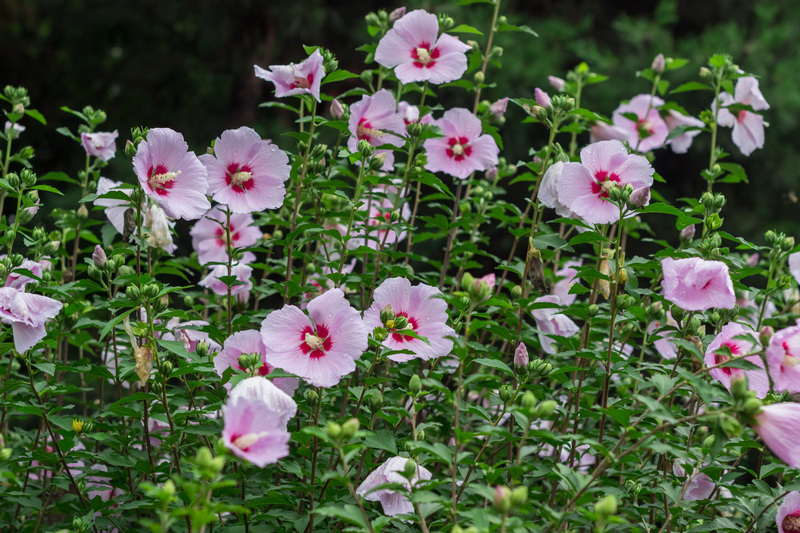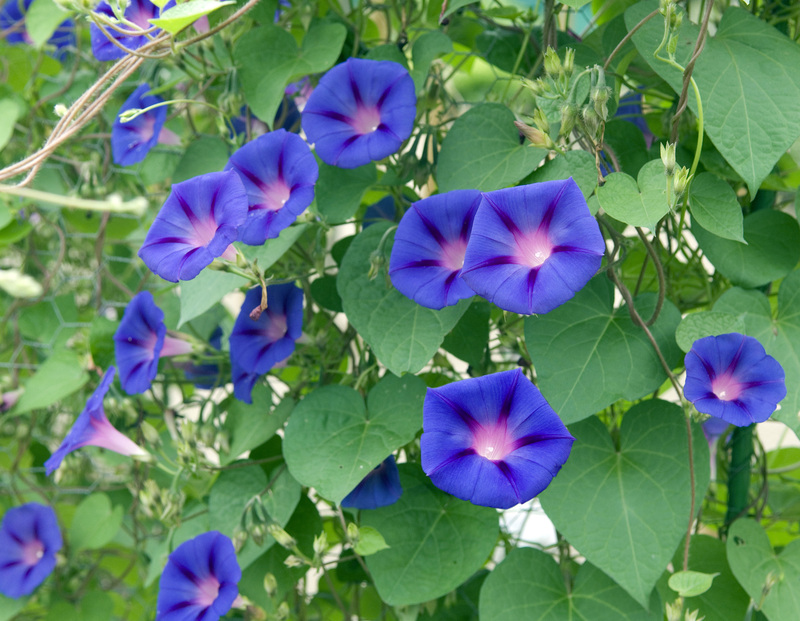From Basic to Bold: Hedge Trimming Shapes Explored
Posted on 28/08/2025
From Basic to Bold: Hedge Trimming Shapes Explored
Hedge trimming is more than just a gardening chore--it's an art form that transforms any outdoor space from average to awe-inspiring. Whether you're a homeowner wanting pristine boundaries or a landscaping enthusiast eager to make a statement, hedge shaping is a skill worth mastering. In this comprehensive guide, we'll explore the spectrum of hedge trimming shapes, from the simple to the spectacular. By reading, you'll gather tips, techniques, and creative vision to turn your green borders into living works of art.
Understanding the Basics of Hedge Trimming Shapes
Before diving into intricate styles, it's essential to grasp the foundational forms of hedge pruning. These basic shapes establish structure, promote healthy growth, and create an orderly appearance in your garden. Whether you prefer clean lines or softly rounded contours, you'll want to start here:
- Square or Rectangular Hedges: The most prevalent choice, these shapes deliver a classic, tidy look that defines paths, fences, and sections of your landscape.
- Rounded or Curved Hedges: Popular for a softer, welcoming vibe, curved hedges suit entryways and garden perimeters beautifully.
- Naturalistic or Freeform Hedges: This understated approach allows the hedge to follow its natural growth, requiring only subtle shaping for maintenance.
The Tools You Need
Whether aiming for basic hedges or wild topiary, you'll need the right gear for successful hedge cutting:
- Manual Hedge Shears: Perfect for detail work and finishing touches.
- Electric or Battery-Powered Hedge Trimmers: Ideal for longer hedges and faster results.
- Loppers and Pruners: For thicker branches that basic shears can't tackle.
- String and Stakes: Essential for marking straight lines and consistent designs.
- Protective Gear: Safety goggles and gloves keep you protected during any hedge trimming project.

The Basics: Foundational Hedge Trimming Shapes
1. Rectangular Hedges - The Formal Foundation
Rectangular or square hedges represent the starting point for most garden designs. Not only are they easy to maintain, but their crisp edges and flat tops offer unparalleled orderliness in both residential and commercial settings. Boxwood and privet hedges are classic choices for this style.
Key Advantages:
- Provides privacy and security
- Easy to trim and maintain
- Complements modern and traditional architecture
2. Rounded and Cloud Hedges - A Soft Approach
Rounded shapes offer a graceful and relaxed alternative. Often used along pathways, around patios, or as standalone features, rounded hedges soften the harsh lines of fences or buildings. Cloud pruning elevates this approach, sculpting the hedge into billowy, cloud-shaped clusters for added interest.
Key Benefits:
- Invites a warm, informal atmosphere
- Less prone to brown tips and uneven growth
- Ideal for low-maintenance gardens
3. Naturalistic Hedges - Embracing Uniqueness
For a rustic and eco-friendly garden, embrace the hedge's organic shape. This style encourages biodiversity, requiring only a gentle hand to remove wayward growth or create subtle definition. Informal hedges often host beneficial insects, birds, and native wildlife, enhancing your garden's overall health.
Highlights:
- Requires little intervention
- Blends seamlessly with wildflower areas
- Promotes a wildlife-friendly space
Intermediate Hedge Shapes: Moving Beyond the Basics
4. Arched or Domed Hedges
Creating an arch or dome shape in your hedges introduces a sense of drama and grandeur. Arched hedges work stunningly over garden gates, entry paths, or as focal points in larger landscapes. The trick is consistent symmetrical shaping and regular trimming.
Why Choose an Arch?
- Draws attention and frames views beautifully
- Adds height and depth to the garden design
- Can serve as living tunnels or green invitations
5. Tapered Hedges
A professional landscaping secret, tapered shaping means keeping the base of the hedge wider than the top. This ensures that every layer receives sunlight, keeping the entire hedge healthy and verdant. Tapered or "A-shaped" hedges are commonly used for boundaries and privacy screens.
Distinct Advantages:
- Prevents brown patches at the base
- Encourages dense lower growth
- Resists wind and weather damage better than vertical shapes
Advanced Hedge Trimming Shapes: Add Flair and Creativity
6. Topiary Art - Sculpted Masterpieces
When you're ready to elevate your hedges from basic to bold, topiary is where the magic happens. Topiary is the sophisticated art of sculpting plants into ornamental shapes and figures. From geometric spheres and spirals to whimsical animals, topiary is both challenging and rewarding.
Popular Topiary Shapes:
- Globes, balls, and cones
- Spirals, pyramids, and obelisks
- Animal figures and abstract forms
7. Spirals and Pyramids
If you crave a modern, dynamic look, spiral and pyramid shapes make a powerful statement. These advanced hedge trimming designs add movement and vertical interest to gardens, driveways, and patios. Boxwood, yew, and holly hedges are popular choices due to their fine, dense foliage.
Benefits:
- Provides eye-catching focal points
- Showcases your gardening expertise
- Complements both contemporary and classical landscapes
8. Animal and Whimsical Forms
For those with artistic flair and patience, creating animal or abstract shapes introduces fun and personality into the garden. This type of advanced hedge shaping is popular in large estate gardens or public parks, but can be adapted for home gardens on a smaller scale.
Why Try Whimsical Hedges?
- Transforms gardens into interactive art spaces
- Delights children and visitors
- Offers a platform for creative expression
9. Wave and Parterre Designs
Wave-shaped hedges introduce rhythmic flow to any landscape, mimicking rolling hills or water currents. Meanwhile, parterre designs incorporate low hedges arranged in intricate, symmetrical patterns--ideal for formal gardens or framing flowerbeds.
Main Features:
- Creates striking visual movement
- Defines garden sections and highlights particular areas
- Works well with both small and large spaces
The Practical Guide: Achieving Your Desired Hedge Shape
Preparation and Planning
Before picking up your trimmers, plan your hedge shape carefully. Sketch your design on paper and walk around your garden to visualize its impact from different vantage points. This preparation helps you anticipate maintenance and guides your plant choice.
Perfecting the Technique
- Trim in stages rather than all at once, especially with complex shapes.
- Always cut a little at a time--once removed, branches won't grow back in the same spot!
- Keep hedge shears sharp for clean cuts and healthy regrowth.
- Step back regularly to assess your progress and symmetry.
Timing Matters
Timing your trimming is crucial for optimal results. Most hedges benefit from a primary shaping in late spring or early summer, with a light touch-up in late summer if necessary. Avoid heavy clipping in autumn, as frost-damaged regrowth can occur. For evergreen topiary shapes, frequent small trims during the growing season maintain crisp outlines.
Choosing the Right Plants for Hedge Shaping
Certain species respond better to decorative hedge trimming than others. Choose plants with dense foliage, steady growth rates, and an ability to regrow after pruning. Here are popular choices:
- Boxwood (Buxus sempervirens): The top choice for topiary and parterre due to tiny leaves and tolerance of frequent trimming.
- Yew (Taxus baccata): Flexible, dense, and long-lived--ideal for both classic and imaginative hedge shapes.
- Privet (Ligustrum): Rapid-growing and hardy, perfect for privacy screens and basic shapes.
- Lonicera (Honeysuckle): Excellent for fast results and complex designs.
- Holly and Ilex: Prized for their dark green leaves and ornamental berries, these create distinctive, glossy hedge shapes.

Caring for Your Shaped Hedges
Aftercare and Maintenance
- Water regularly after heavy trimming to encourage regrowth.
- Apply mulch at the base to keep roots cool and moistened.
- Feed with balanced fertilizer once or twice a year for lush foliage.
- Inspect for pests and diseases--especially on tightly clipped or intricate topiary shapes.
Remember: Regular maintenance is critical to retaining shape and plant health, especially with advanced creative designs.
From Basic to Bold: Finding Your Hedge Trimming Style
From classic rectangles to breathtaking topiary, the world of hedge trimming shapes is as diverse as your imagination allows. Whether you favor restrained formality, flowing curves, or bold display pieces, the right approach can transform your garden boundaries into a personal showcase of style and horticultural skill.
Embrace the challenge! Experiment with basic and advanced hedge trimming techniques--and watch as your green spaces become the envy of the neighborhood, showcasing artistry, personality, and year-round appeal.
Ready to get started? Gather your tools, choose your plant, and trim your way from basic to bold--one leaf at a time!
Frequently Asked Questions
- Can I shape any hedge plant?
While many shrubs can be shaped, species with dense, small leaves and vigorous regrowth--such as boxwood and yew--are best for intricate forms. - How often should I trim my hedges?
Frequency depends on the species and desired shape. Most formal hedges need two trims a year, while topiary may require monthly touch-ups in the growing season. - What's the easiest shape for beginners?
Rectangular or rounded shapes are ideal for beginners, offering rewarding results with minimal skill. - Are elaborate hedge shapes high maintenance?
Yes--bold forms like spirals and animal figures require careful, regular pruning, while simpler shapes are relatively easy to maintain.
For more insightful gardening articles and hedge shaping ideas, stay tuned to our blog. Happy trimming!

